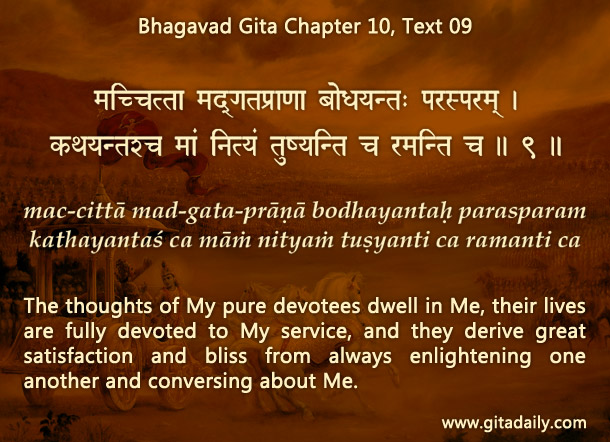The Bhagavad-gita’s essence is manifest in its four nutshell verses (10.08-11). The first two of these verses convey how Krishna’s supreme position transforms the hearts of seekers, inspiring them to become devoted to him and to delight in his glories. And the last two verses depict how Krishna’s merciful disposition illumines their hearts, guiding them towards the supreme enlightenment. Let’s focus on the first two verses – and see how they reveal the ever-relishable nature of Krishna’s glories.
In the first verse (10.08), the Gita declares that Krishna is the source and sustainer of everything – and that those who know him as such are enlightened and they become wholeheartedly devoted to him. The Gita uses the word budha, which is cognate with Buddha, to refer to the enlightened. By this usage, the Gita indicates that knowing Krishna’s position and becoming devoted to him comprise enlightenment.
The next verse (10.09) elaborates how such enlightened people are devoted to Krishna: their thoughts dwell in him; their lives are dedicated to him; and they delight in discussing about him and in enlightening each other about him. The Gita uses another cognate word bodhayantah to refer to such mutual enlightenment. The context conveys that this enlightenment is not vertical, like that imparted by a seer to a seeker – it is horizontal, being exchanged and relished among enlightened peers.
How can the enlightened enlighten each other? Because Krishna’s glories are unending and are unendingly relishable.
Different enlightened souls realize and relish his glories according to the flavor of their individual relationship with Krishna and share that with other enlightened souls, thus expanding each other’s appreciation of his glories. And because Krishna is infinite and has infinite glories, enlightened devotees delight in his remembrance eternally. By following in their footsteps, we too can gradually enter that world of everlastingly ecstatic enlightenment.
Explanation of article:
Podcast:


Leave A Comment